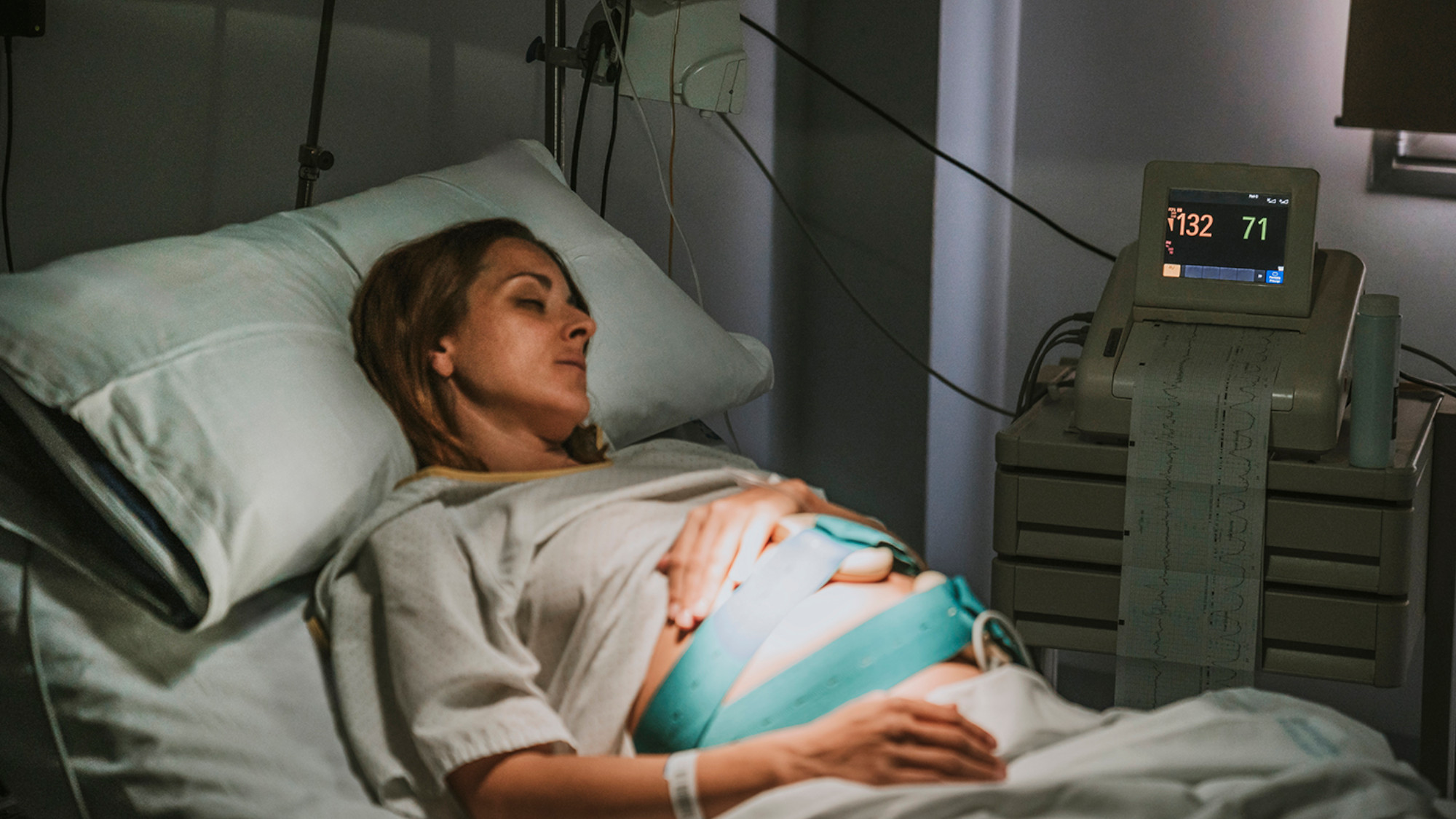By The Week US
Copyright theweek

SUBSCRIBE & SAVE
Less than $3 per week
View Profile
The Explainer
Talking Points
The Week Recommends
Newsletters
From the Magazine
The Week Junior
Food & Drink
Personal Finance
All Categories
Newsletter sign up
Pregnancy in America
Why is it getting riskier to give birth in the U.S.?
Newsletter sign up
“We are so baby-focused,” said Karen Sheffield-Abdullah, a nursing professor at the University of North Carolina. “Once the baby is here, it’s almost like the mother is discarded.”
(Image credit: Getty Images)
The Week US
16 September 2025
What’s changed about giving birth?
For many Americans, it’s become pricey and potentially dangerous. The U.S. has a higher rate of mothers dying in pregnancy, childbirth, and postpartum than any other high-income nation, with 32.6 deaths for every 100,000 live births in 2022, up from 25.3 deaths in 2018. The rates are sharply higher for some ethnic groups: Black women had a mortality rate of 50 deaths per 100,000 live births in 2022, nearly triple the rate for white and Hispanic women. That same year, Canada recorded 8.4 deaths per 100,000 live births, the U.K. 5.5, and Norway zero. The average cost of giving birth is also higher in the U.S. than in other high-income countries, coming in at nearly $19,000 for a vaginal delivery in 2022, or about $2,854 after insurance kicks in. In Germany and France, the total cost is about $2,500. Yet experts warn that pregnancy in the U.S. could become both riskier and more expensive in coming years because of President Trump’s recent spending and tax law, which over the next decade will cut $930 billion from Medicaid—a program that covers 41% of all births in the U.S., including nearly half in rural communities. “We need to continue to invest in public health infrastructure,” said Rose Molina, an ob-gyn at Harvard Medical School. “It’s very clear that we’re not getting better, and if anything, the rates of pregnancy-related deaths are getting worse.”
Why is the U.S. death rate so high?
Doctors cite numerous reasons, including lack of access to care, the fact that more women are having children later in life, and that reproductive-age Americans are suffering from more chronic medical conditions—including obesity and cardiovascular disease—at younger ages than before. Cesarean deliveries are also becoming more common, going from about 1 in 5 births in 1996 to 1 in 3 today, and surgery comes with risks. But the rate of women dying of delivery-related causes in hospitals actually dropped by more than 50% from 2008 to 2021, according to a study by the Department of Health and Human Services. “Most of the women don’t die in the hospital during childbirth,” said Dr. Jean R. Guglielminotti of Columbia University. “They die after they’ve left the hospital.”
How common are postpartum deaths?
About 22% of deaths occur during pregnancy, 25% within seven days of giving birth, and 53% occur between seven days to a year postpartum, according to a 2022 report from the Centers for Disease Control. Overdose, suicide, and other maternal mental health conditions accounted for 23% of deaths in pregnancy and postpartum; excess bleeding, the second top cause of death, was responsible for 14%; and cardiac problems 13%. The study determined that 80% of all pregnancy-related deaths were preventable. “We are so baby-focused,” said Karen Sheffield-Abdullah, a nursing professor at the University of North Carolina. “Once the baby is here, it’s almost like the mother is discarded.” Lawmakers have tried to address the problem: A 2021 law let states extend postpartum Medicaid coverage from 60 days to a full year, and 48 states and Washington, D.C., have done just that. But health policy analysts warn that such progress could be undone by Trump’s new spending law.
Escape your echo chamber. Get the facts behind the news, plus analysis from multiple perspectives.
SUBSCRIBE & SAVE
Sign up for The Week’s Free Newsletters
From our morning news briefing to a weekly Good News Newsletter, get the best of The Week delivered directly to your inbox.
From our morning news briefing to a weekly Good News Newsletter, get the best of The Week delivered directly to your inbox.
What will the law change?
The “big, beautiful” bill will shrink federal Medicaid spending by 14% through 2034, largely by imposing work requirements for able-bodied adults and by capping several mechanisms used to fund state Medicaid programs. Although pregnant women and those with children under 14 are exempt from work requirements, the time-consuming process of documenting an exemption could cause some to lose coverage. Meanwhile, the loss of Medicaid revenue could prove devastating for many rural hospitals and especially for maternity care—one of the most costly services provided by hospitals. Recovering the cost of maternity care was already difficult for medical facilities in rural areas, where there’s a smaller number of patients and a greater share on Medicaid, which pays far less than private insurance.
What will that mean for rural hospitals?
The cuts could cause 144 rural hospitals with delivery units to shutter or drastically reduce services, according to the nonprofit National Partnership for Women & Families. That would exacerbate the existing crisis in maternity care: More than 35% of U.S. counties now lack birthing facilities or obstetric clinicians. A Washington Post analysis found that the average driving distance to the nearest birthing hospital for residents of Kentucky would go from 31 miles to 42 miles if 35 at-risk hospitals in the state were to close. Those extra miles could be the difference between life and death. “When somebody is in labor or having a pregnancy-related emergency, every second counts,” said Rolonda Donelson, a policy analyst at the Kaiser Family Foundation.
Can those hospitals be kept open?
Republicans added a $50 billion fund for struggling rural hospitals to the spending law. But that fund, the Rural Health Transformation Program, is less than a third of the money rural communities are expected to lose in Medicaid cuts. “It is just a fig leaf,” said Edwin Park, a researcher at Georgetown University’s Center for Children and Families. Mississippi state Rep. Timaka James-Jones worries the reduction in Medicaid funding will lead to many more stories like that of her niece, Harmony Ball-Stribling, who died of pre-eclampsia at eight months pregnant while being driven to an ER 30 miles from her rural home. “We’re not talking dollars and cents,” said James-Jones. “We’re talking about lives, and people are dying. People are truly dying because there is no health care in some places.”
The abortion ban complication
Since 2022, pregnant women have faced another major obstacle to accessing medical care: abortion bans. After the Supreme Court overturned Roe v. Wade, 19 states enacted total abortion bans or restricted the procedure to early pregnancy. Some doctors in states with abortion bans have reported feeling hesitant to treat women who could be suffering a miscarriage, fearing they could be prosecuted and imprisoned for aiding an illegal termination. The federal Emergency Medical Treatment and Labor Act guarantees stabilizing treatment to anyone who enters an emergency room, yet pregnant women in states such as Florida and Texas have reported being denied care in ERs. In Arkansas, a woman went into septic shock and lost her unborn baby after an emergency room refused to admit her. Kelsie Norris-De La Cruz, 25, lost a fallopian tube and most of her right ovary when an Arlington, Texas, hospital turned her away instead of treating her ectopic pregnancy. “These bans are making it nearly impossible to get basic emergency health care,” she wrote in a complaint to the Centers for Medicare and Medicaid Service. “Women like me deserve justice and accountability from those that hurt us.”
Sign up for Today’s Best Articles in your inbox
A free daily email with the biggest news stories of the day – and the best features from TheWeek.com
Contact me with news and offers from other Future brandsReceive email from us on behalf of our trusted partners or sponsorsBy submitting your information you agree to the Terms & Conditions and Privacy Policy and are aged 16 or over.
The Week US
Social Links Navigation
The potential warning sign of an auto lender’s bankruptcy
In the Spotlight
Tricolor collapse an ‘extreme example’ of economy’s challenges
RFK Jr.’s anti-vaccine crusade comes under fire
Robert F. Kennedy Jr. faced a heated hearing as senators accused him of lying and spreading chaos
Venezuela: Was Trump’s air strike legal?
A Trump-ordered airstrike targeted a speedboat off the coast of Venezuela, killing all 11 passengers on board
You might also like
RFK Jr.’s anti-vaccine crusade comes under fire
Robert F. Kennedy Jr. faced a heated hearing as senators accused him of lying and spreading chaos
Venezuela: Was Trump’s air strike legal?
A Trump-ordered airstrike targeted a speedboat off the coast of Venezuela, killing all 11 passengers on board
Angela Rayner: the rise and fall of a Labour stalwart
In the Spotlight
Deputy prime minister resigned after she underpaid £40,000 in stamp duty
Air strikes in the Caribbean: Trump’s murky narco-war
Talking Point
Drug cartels ‘don’t follow Marquess of Queensberry Rules’, but US military air strikes on speedboats rely on strained interpretation of ‘invasion’
How Benjamin Netanyahu shaped Israel in his own image
The Explainer
He has seldom been personally popular, but ‘King Bibi’ is an exceptionally shrewd operator
Kim Jong Un’s triumph: the rise and rise of North Korea’s dictator
In the Spotlight
North Korean leader has strengthened ties with Russia and China, and recently revealed his ‘respected child’ to the world
Jeffrey Epstein’s secrets
Six years after his death, conspiracy theories still swirl around the sex trafficker. Why?
Voting: Trump’s ominous war on mail ballots
Donald Trump wants to sign an executive order banning mail-in ballots for the 2026 midterms
View More ▸
Contact Future’s experts
Terms and Conditions
Privacy Policy
Cookie Policy
Advertise With Us
The Week is part of Future US Inc, an international media group and leading digital publisher. Visit our corporate site.
Future US, Inc. Full 7th Floor, 130 West 42nd Street



